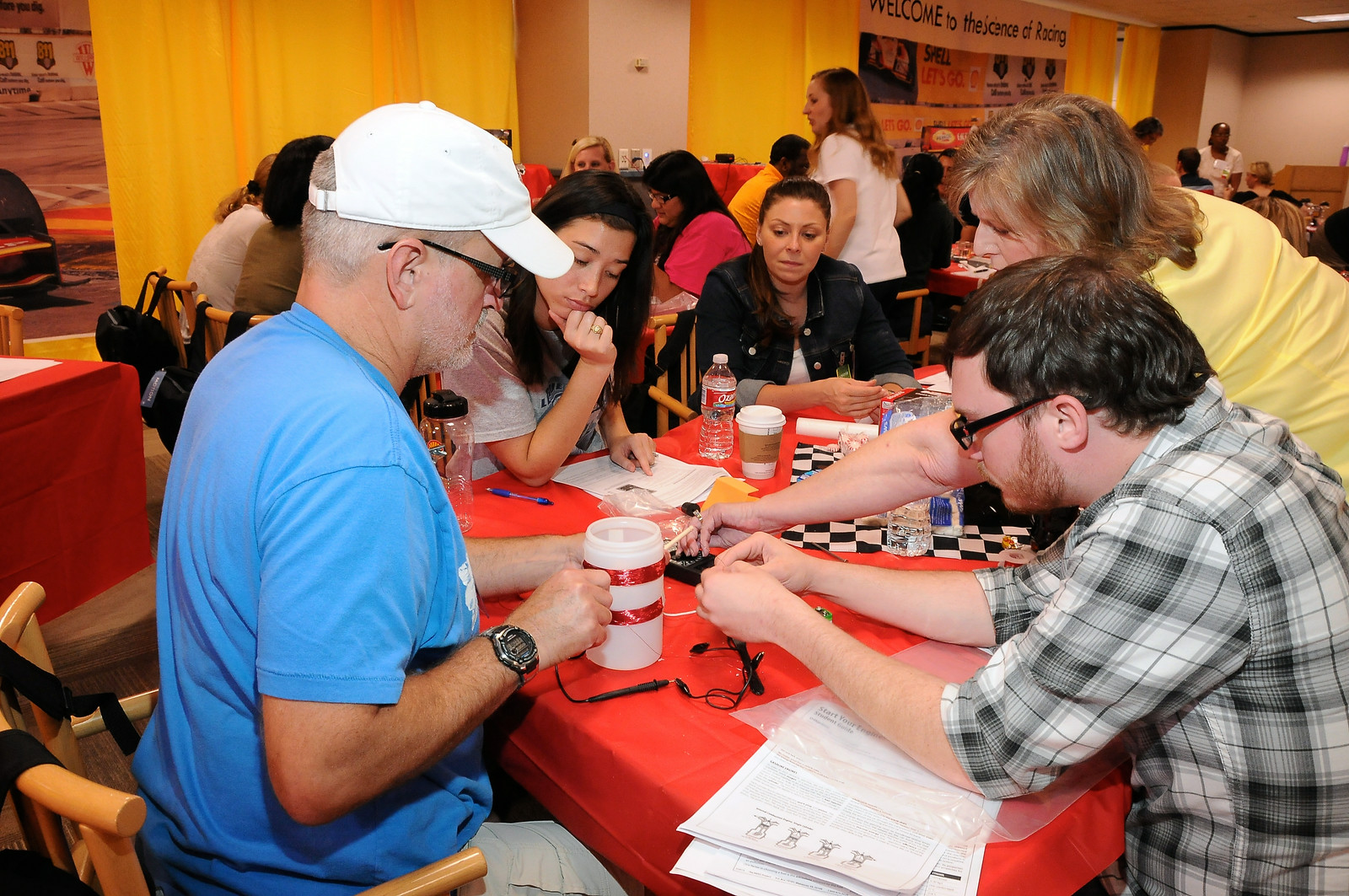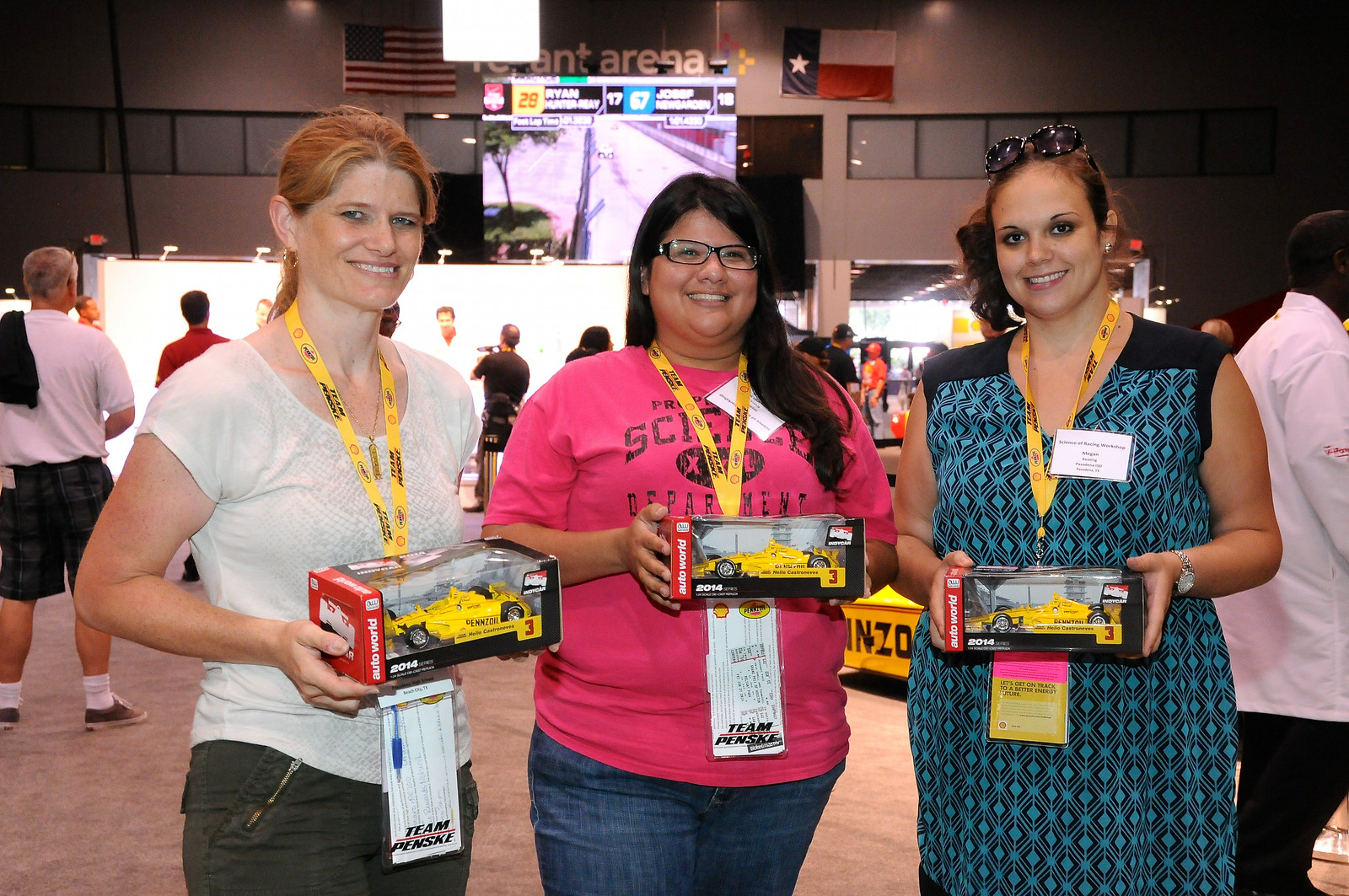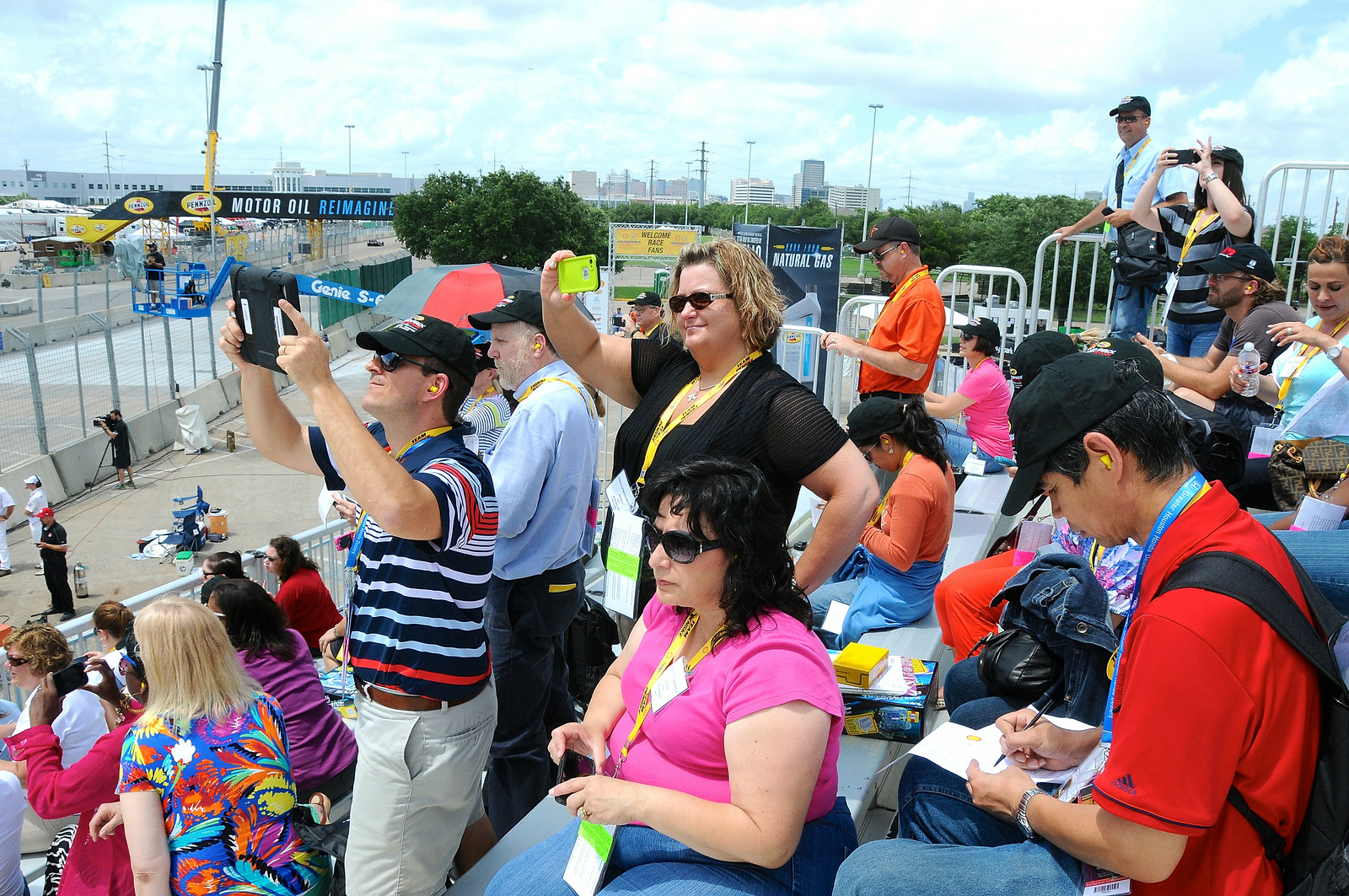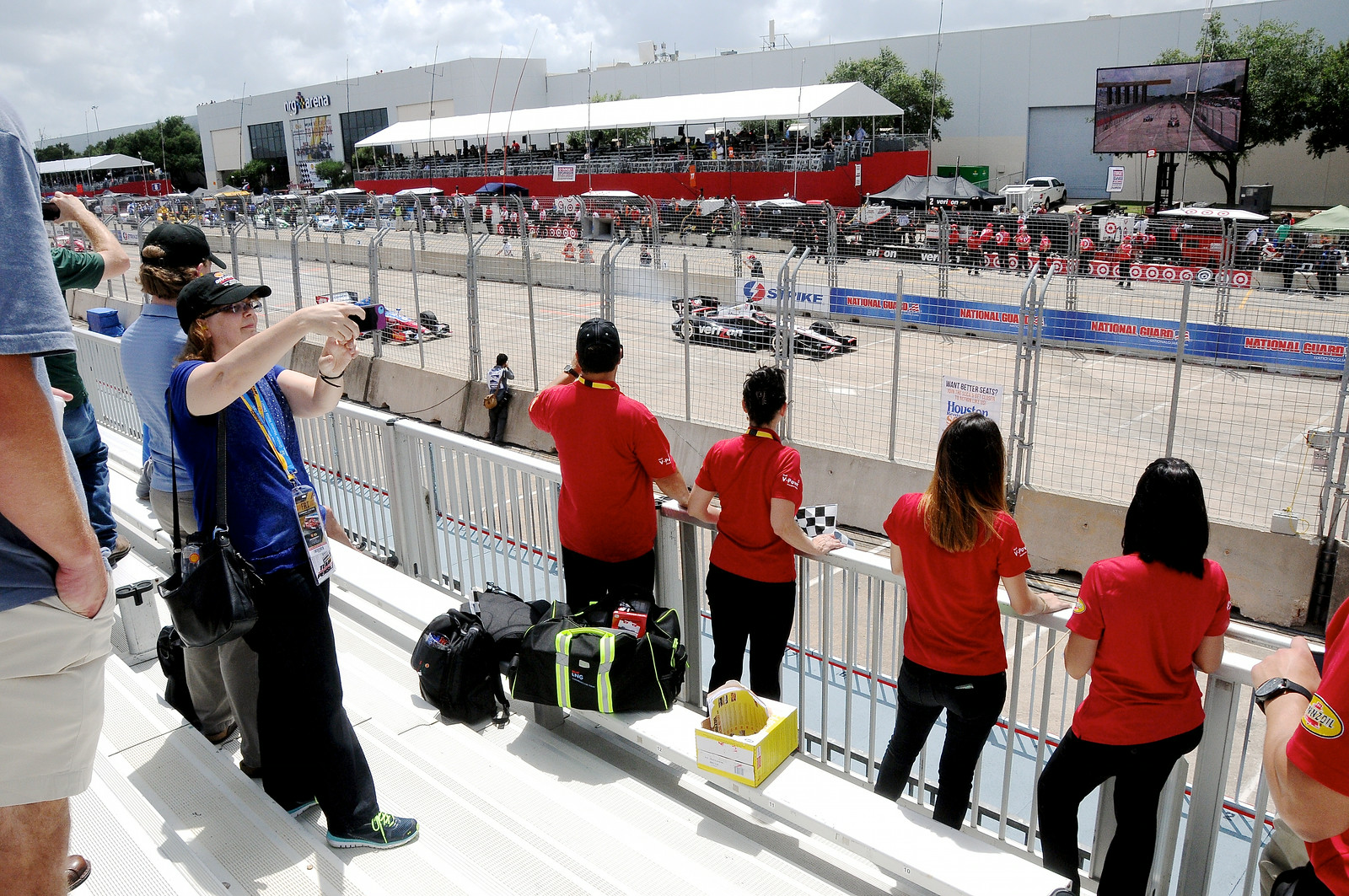Get your motors running!
What do Shell, NEED, the Indy Racing League, and Houston-area teachers all have in common? The need for speed! Thanks to Shell, over 80 teachers were able to experience the immense power of IndyCar racing and learn about the energy involved in the racing industry this June while attending a Science of Racing Workshop at the Shell and Pennzoil Grand Prix of Houston.
Three areas that are very important in the racing industry are fuel, motors, and polymers. Houston area teachers got their hands dirty exploring each of these three topics! Upon arrival, participants were encouraged to explore different activities from the Science of Energy, to get them thinking about transforming energy and how energy and racing are related.
After a welcome from Karen Labat of Shell, participants were inspired by the innovation behind racing as they viewed the history of breaking the ground speed record. Then the participants were off! Participants first explored the basics of polymers made from petroleum products and their applications in the racing industry. They experimented with making two simple polymers and observing the absorbent properties of a polymer – sodium polyacrylate, or “slush powder.” Some of the polymers highlighted in the racing industry were polycarbonate, used in helmet shields and the windshields of stock cars, and NOMEX, a fire-retardant material used to manufacture the fire suits worn by drivers and pit crew members.
Next, participants explored the properties and molecular structure of gasoline and ethanol, two fuels used in the racing industry. While Formula One and NASCAR primarily use gasoline, IndyCar racing uses ethanol, in an 85% ethanol / 15% gasoline blend called E85. Through the activities, participants were able to compare and contrast the properties of both fuels, and construct molecular models to understand the combustion of the fuels and the amount of energy and carbon dioxide each produces.
The morning concluded with activities exploring how electricity and magnetism form motors that are used to start engines. To save weight, racing vehicles do not have batteries or starters installed on them like passenger vehicles do. Instead, they are started with an external starting device that uses electricity and magnetism similarly to the way a motor uses them. Participants built the Science of Electricity model found in NEED curriculum and could see that turning the magnets inside a coil of wire induced electrical current in the wire using a digital multimeter.
After lunch, teachers, Shell sponsors, and NEED facilitators boarded buses to head to the Reliant Center to watch practice laps, standing starts, and a preliminary race among IRL drivers! The power of the vehicles was not necessarily easy to see, but the roar of the engines and the vibration in the bleachers and walkways demonstrated just how powerful these engines are as they topped speeds of 150 mph! Because it is a road course and not an oval, acceleration forces were in play the entire time, adding to the fantastic display of strength these vehicles and their drivers must possess.
Teachers also received the opportunity to tour the Shell event area, learning about advancements in fuel science, as well as racing science. Participants competed with each other, much like the drivers, in an engine building activity and trivia contests. Winning teams took home very special prizes – commemorative model vehicles like the one Helio Castroneves drove at the track that day!



NEED has been proud to partner with Shell to bring many energy workshops to teachers around the country, and we are glad to have been able to partner with them in this exciting workshop. Participants enjoyed their day and didn’t seem to mind that it was their summer break! It was truly an awesome day at the races, and we look forward to doing it again soon!
Check out SmugMug for photos from the event!
Take a look at the Science of Racing guides used at this event on our transportation page.
